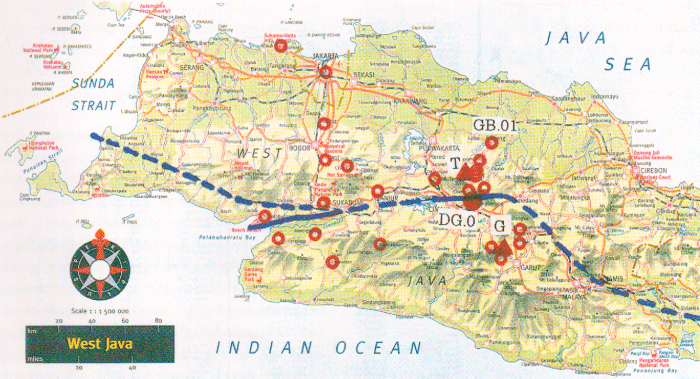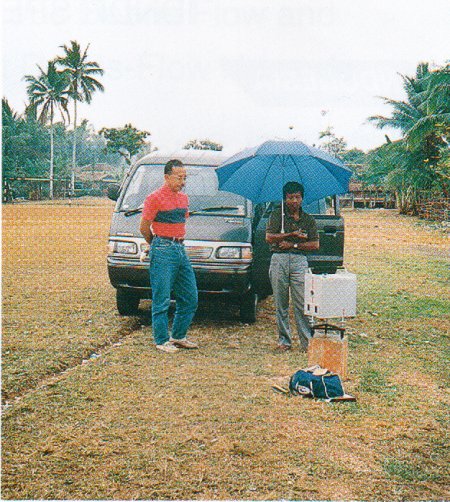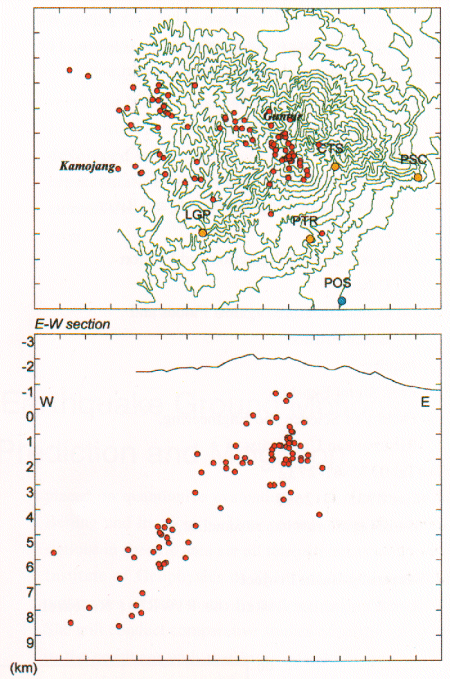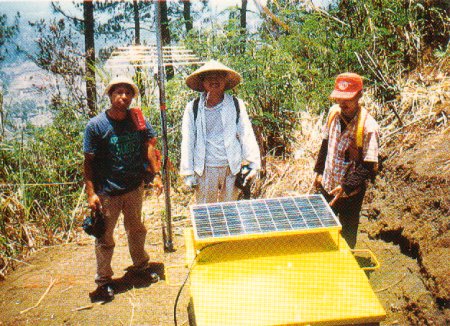

 |
| Locations of gravity stations in West Jawa, Indonesia. Red open circle are locations of gravity stations. Red triangles are volcanoes( T:Tangkubanperahu; G:Guntur) Solid lines are active faults(West:Cimandiri;East:Lembang) Dotted lines are expected tectonic lines(or faults). |
 |
| Gravity Measurement at Sagaranten to the south-west of Bandung. We use an umbrella protecting gravity meter from heavy sunshine. |
 |
| Hypocentral distribution at Guntur Volcano, West Jawa, Indonesia during November 1994 to March 1996. Hypocenters were determined by using 4 permanent stations(yellow circles), assuming homogeneous half Space of Vp=2.76 km/s. Upper and lower figures are epicenter distribution and projection on vertical cross- section of east-west, respectively. |
 |
| One of the seismic stations at Guntur(PSC). The electric power is supplied by a solar panel. The seismic signals are transmitted to Guntur Volcano Observatory (POS, blue circle in the figure) and recorded. |


